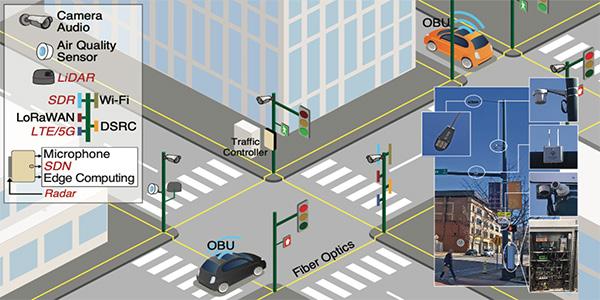
2 minute read
Using AI To Connect Vehicles And Traffic
BY REID BELEW
The University of Tennessee-Chattanooga, with the University of Pittsburgh, Georgia Institute of Technology, Oak Ridge National Laboratory, and the City of Chattanooga, have been awarded $1.89 million from the U.S Department of Energy to create a new model for traffic intersections that reduces energy consumption.
Advertisement
UTC’s Center for Urban Informatics and Progress will leverage its existing smart corridor to accommodate the new research.
“This project is a huge opportunity for us,” CUIP Director and principal investigator, Mina Sartipi, said. “Collaborating with the City of Chattanooga and working with Georgia Tech, Pitt, and ORNL on a project that is future-oriented, novel, and full of potential is exciting. This work will contribute to the existing body of literature and lead the way for future research. Our existing infrastructure, the MLK Smart Corridor, will be the cornerstone for this work, as it gives us a precedent for applied research—research with real-world nuance.”
In the DOE proposal, the research team noted the U.S. transportation sector alone accounted for more than 69 percent of petroleum consumption and more than 37 percent of the country’s CO2 emissions. An earlier 2012 National Traffic Signal Report Card found that inefficient traffic signals contribute to 295 million vehicle hours of traffic delay, accounting for 5-10 percent of all traffic related delays.
The project will leverage the capabilities of connected vehicles and infrastructures to optimize and manage traffic flow. The researchers note that while adaptive traffic control systems (ATCS) have been in use for a half century to improve mobility and traffic efficiency, they weren’t designed to address fuel consumption and emissions.
Likewise, while automobile and vehicle standards have increased significantly, their potential for greater improvement is hampered by inefficient traffic systems that increase idling time and stop-and-go traffic. Finding a solution is paramount since the National Transportation Operations Coalition graded the state of the nation’s traffic signals as D+.
“Our vehicles and phones have combined to make driving safer while nascent ITS has improved traffic congestion in some cities. The next step in their evolution is the merging of these systems through AI,” noted Aleksandar Stevanovic, associate professor of civil and environmental engineering at Pitt’s Swanson School of Engineering and director of the Pittsburgh Intelligent Transportation Systems (PITTS) Lab.
“Creation of such a system, especially for dense urban corridors and sprawling exurbs, can greatly improve energy and sustainability impacts. This is critical as our transportation portfolio will continue to have a heavy reliance on gasoline-powered vehicles for some time.”
The goal of the 3+ year project is to develop a dynamic feedback Ecological ATCS (Eco-ATCS) which reduces fuel consumption and greenhouse gases while maintaining a highly operable and safe transportation environment. The integration of AI will allow additional infrastructure enhancements including emergency vehicle preemption, transit signal priority, and pedestrian safety. The ultimate goal is to reduce corridor-level fuel consumption by 20 percent.
“Chattanooga is a city focused on embracing technology and innovation to create a safer and more efficient environment,” Chattanooga Smart City Director, Kevin Comstock, said. “Being supported and affirmed by the Department of Energy is an enormous vote of confidence in the direction we’re heading.”
Georgia Tech team member, Michael Hunter, echoes that sentiment. “Through this project we have the potential to develop a pilot deployment that may be replicated throughout the country, helping realize the vast potential of these technologies,” he said.







